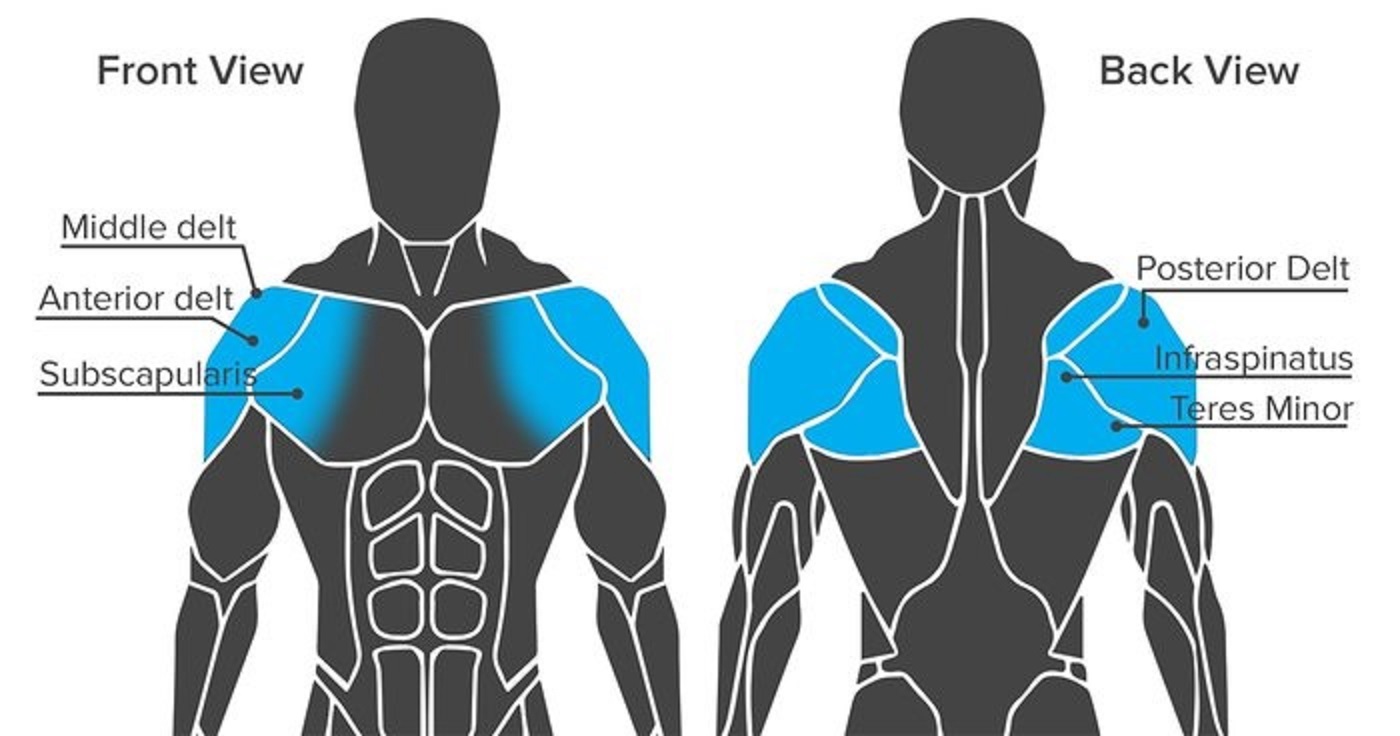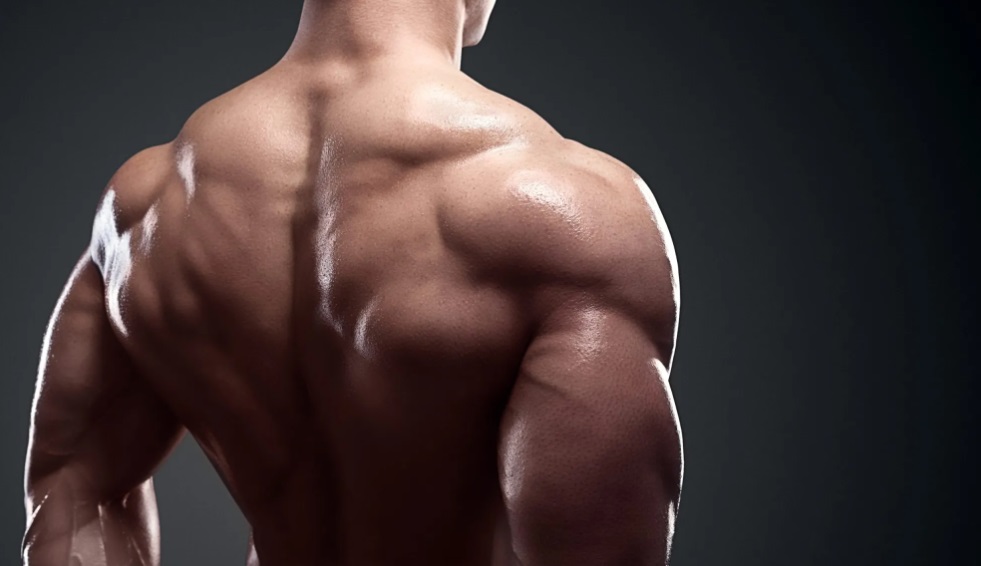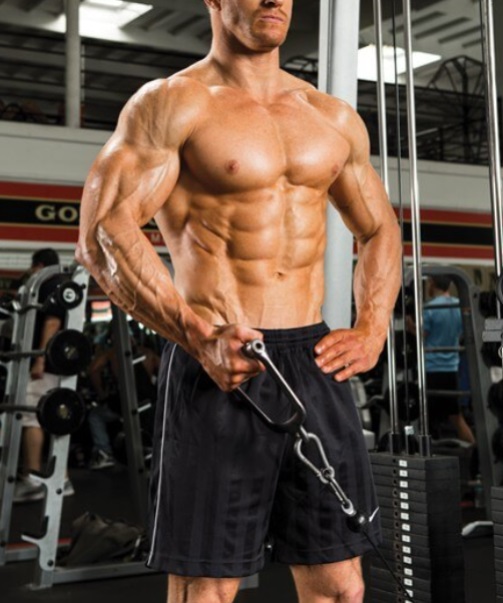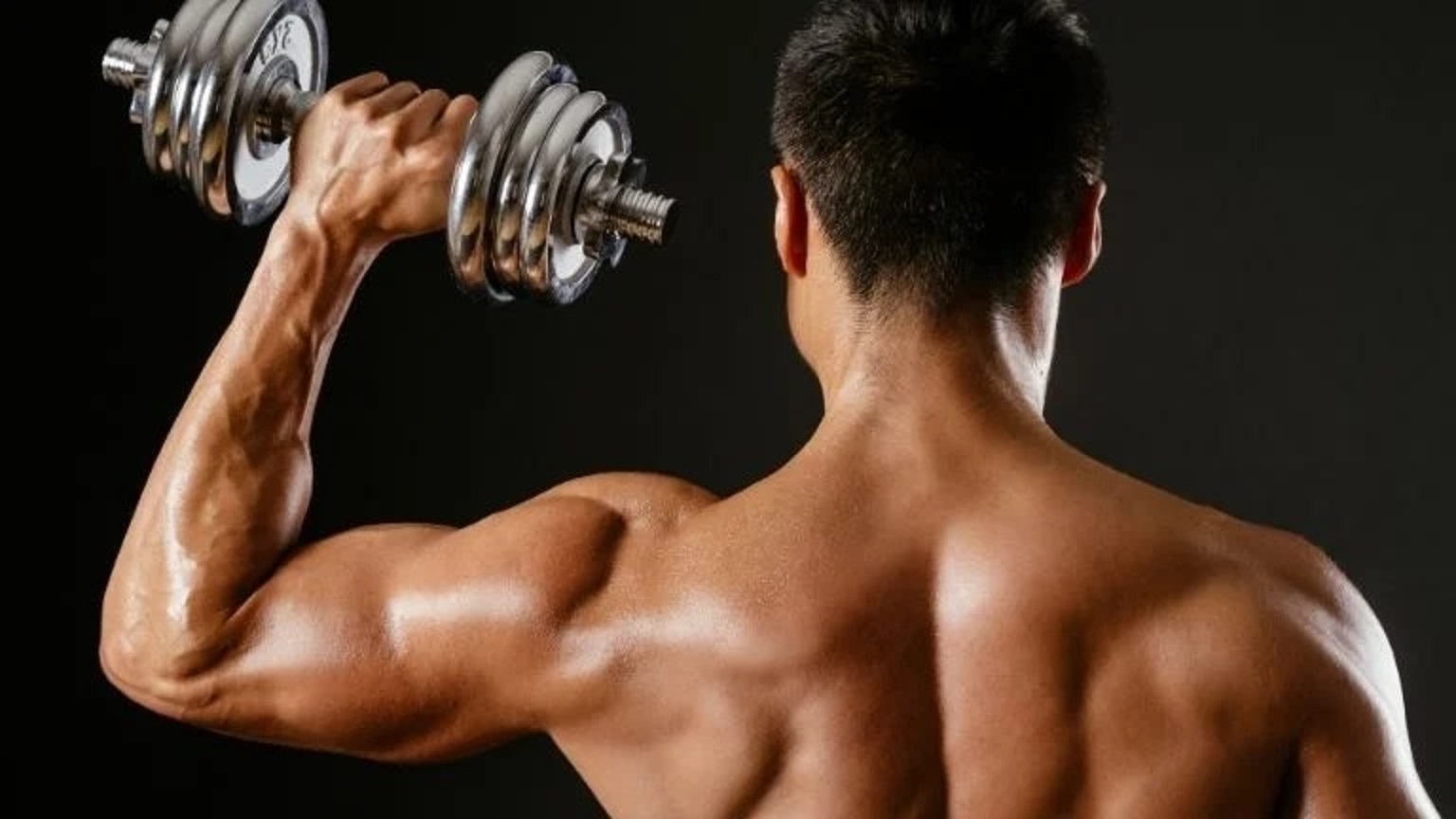- Here let’s show you the shoulder workout, which despite its seemingly straightforward nature, features two essential components that set it apart from the rest.
- The incorporation of movements that disrupt the body’s accustomed patterns and the establishment of a profound mind-body connection with each exercise.
- The following guide was crafted to empower anyone seeking to turn their shoulder workouts into winners. By incorporating these principles, you can break through plateaus, overcome stagnation, and invigorate your fitness routines.
Shoulder Muscle Anatomy
In bodybuilding, understanding the anatomy of shoulder muscles is crucial for developing a well-rounded and proportionate physique.
- Deltoids (Delts): The deltoids consist of three distinct heads: anterior (front), lateral (middle), and posterior (rear). Targeting each head with precision is essential for achieving a well-rounded shoulder profile. Incorporating exercises like front raises, lateral raises, and rear deltoid flies is key to sculpting strong, defined deltoids that contribute to overall upper body strength and symmetry.

- Rotator Cuff Muscles: Well-developed rotator cuffs contribute to shoulder stability during heavy lifting. They stabilize the shoulder joint, and assist in various arm movements.
- Trapezius: Defines the upper back and contributes to the overall appearance of shoulder development. Well-developed traps create a more imposing upper body. Traps function by elevating and rotating the scapula.
- Rhomboids: Assist in achieving a well-defined and muscular back. Functions to retract and stabilize the scapula.
- Pectoralis Major: While primarily a chest muscle, a developed pectoralis major complements overall upper body aesthetics, especially in side chest poses. Contributes to arm flexion, adduction, and internal rotation.
Rear Delt Growth: Seated Rotational Exercise
- Two favored approaches have been underscored: performing rotations at a 90-degree angle to counteract gravitational effects and executing them in an upright seated position to eliminate gravitational influence.
- Despite potential skepticism, the central theme is the effectiveness of these rotational exercises for developing the rear delts.
- A featured exercise involves maintaining a tall seated position, actively working against gravity, and concentrating on developing the rear delts. Contrary to common misconceptions, the seated rotational movement is underscored as a valuable and effective means of rear delt development.
- To convincingly illustrate this point, you can perform a simple at-home test: tuck your elbows into the sides, rotate the hands back, and flex as intensely as possible. The expected outcome is a firsthand experience of the noticeable contraction in the rear delts.
- This practical demonstration can dispel any doubts about the exercise’s efficacy. By urging people to physically engage with the concept, the content effectively bridges the gap between theoretical understanding and practical application.
- The tangible experience of feeling the muscles working firsthand serves as a persuasive and experiential demonstration, reinforcing the credibility of the recommended exercise.

Enhanced Rear Delt Workout Variations
- In this particular workout session, a strategic decision was made to deviate from the conventional approach of handling two dumbbells simultaneously.
- Instead, a bench set at a steep incline was utilized to provide support, and the hanging leg closest to it served as a stabilizing anchor. This setup allowed for rotations parallel to the floor, with the added benefit of leaning against the bench.
- As the movement progressed upward, the capacity to lean against the bench enabled additional rotation, effectively opening up the shoulder and intensifying the contraction in the targeted muscles.
- While this exercise variation proved effective in engaging the rear deltoids, an even more impactful variation was introduced to enhance the workout’s intensity.
- Adopting a traditional T position with the palm supinating, the movement diverged from the typical lateral raise.
- Instead, it followed the natural contraction pathway of the rear delt, leading to a slightly more backward and downward trajectory. This subtle yet crucial adjustment in form resulted in a highly effective and focused workout for the rear deltoid muscles, contributing to a more comprehensive and targeted training approach.
- The emphasis on proper form, the utilization of bench support, and the nuanced variations demonstrated in this workout session aim to provide you with practical insights for optimizing rear deltoid training.
Cable Side Laterals: Maximize Muscles, Minimize Time
- When you are looking to refine the mind-muscle connection, a deliberate shift to cable exercises was deemed essential for their effectiveness.
- The strategy centered around slowing down movements and ensuring thorough flexion in each repetition, with a specific breakdown of cable side laterals into top, middle, and bottom segments.

- The workout began by emphasizing the demanding top section, involving a set of 10 reps. Transitioning to the middle section, where the difficulty level slightly decreased, facilitated another set of 10 reps. This pattern continued with partial reps at the bottom segment. To introduce an additional challenge, the set concluded with 10 full-range reps.
- Despite the significant number of reps, the workout prompts contemplation on the meaningful investment of time. The blend of challenge and progressive engagement at different muscle levels offers a valuable avenue for personal fitness development.
Isolate & Strengthen: The Single-Arm Press for Anterior Deltoids
- When you are looking for effective anterior deltoid isolation, the single-arm press introduces a distinct approach, deviating from traditional non-press exercises. The primary focus is on isolating the anterior deltoid by maintaining a fixed elbow position throughout the entire movement.
- The execution of the single-arm press involves a deliberate and controlled approach.

- During the descent phase, a backward lean is incorporated, enhancing the stretch on the anterior deltoid. As the ascent begins, there’s a forward lean, restricting the contraction to the range allowed by the anterior deltoid.
- This nuanced technique not only targets the muscle specifically but also allows the use of lighter weights, emphasizing the importance of a strong mind-muscle connection.
- An intriguing aspect of this exercise is its potential appeal to people dealing with shoulder issues. Despite shoulder challenges, people may find the single-arm press beneficial due to its controlled and isolative nature.
Rear Delt Cable Workout: Comprehensive and Effective
- In the final segment of our workout, we prioritize the often-neglected rear delts, a crucial component for achieving well-rounded shoulder development.
- Recognizing the common need for additional emphasis on this area, we turn to cable exercises, strategically targeting various angles and paths to ensure comprehensive engagement.
- Commencing with a bent-over position, arms extended out to the side, we take deliberate steps forward, intensifying the contraction as we squeeze the rear delts upward and outward.
- This dynamic movement allows for a thorough exploration of the muscle’s range, promoting optimal activation.
- In a strategic shift, we prioritize achieving an extreme stretch, a counter-intuitive but highly effective approach. Employing light weights for higher repetitions (reps), we initiate the movement from an already stretched position. This deliberate choice leverages the benefits of an intense stretch, establishing a heightened connection with the rear delts from the outset.
- The rationale behind this method lies in the premise that the extreme stretch positions the rear delts for optimal engagement. The challenge then becomes maintaining this connection throughout the controlled descent.
- By focusing on controlled repetitions and a deliberate stretch, we enhance the mind-muscle connection, ensuring a targeted and effective workout for the rear delts. This nuanced approach contributes to overall shoulder health and functionality.









